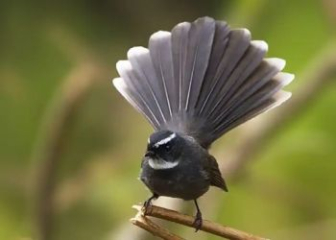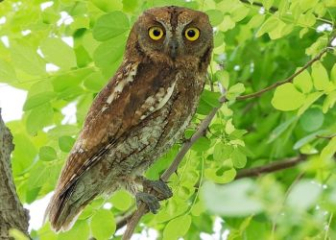Silver-Cheeked Babbler - Techniques for raising thrushes to sing most loudly and enthusiastically
Blog | by
The silver-cheeked babbler (scientific name is Garrulax chinensis), a pet bird with a beautiful, strong voice, loves to compete in vocalizations, likes to bathe in water, sunbathe, and is very intelligent.
The silver-cheeked babbler is one of the familiar names in the Vietnamese bird village. With its characteristic gray-brown feathers, highlighted by its bright white cheeks and its melodious, far-reaching, powerful singing voice, the Silver-cheeked Laughingthrush has become one of the most famous and popular pet birds today.
If you want to learn more about the origin, habits and techniques to help the Silver-cheeked Babbler sing with the most passion, don't miss the content shared by the nicebirds in the article below.
Origin of the Silver-cheeked Babbler

The silver-cheeked babbler is a bird native to Asia.
The Garrulax chinensis (scientific name: Garrulax chinensis) originates from tropical and subtropical regions of Asia. Distributed in the following countries:
- Vietnam: Common in the mountainous regions of the Northwest, Central Highlands and Central regions.
- China: Especially in Guangxi, Yunnan
- Laos
- Thailand
- Cambodia
- Myanmar
- India
In Vietnam alone, the Silver-cheeked Laughingthrush appeared and was domesticated as a pet bird in the 1980s and 1990s in the North and Central regions. Currently, although it is not as popular as the White-ringed or the Magpie-Wren, the Silver-cheeked Laughingthrush is still sought after by many bird lovers thanks to its loud, powerful singing voice.
Appearance of the Silver-cheeked Babbler
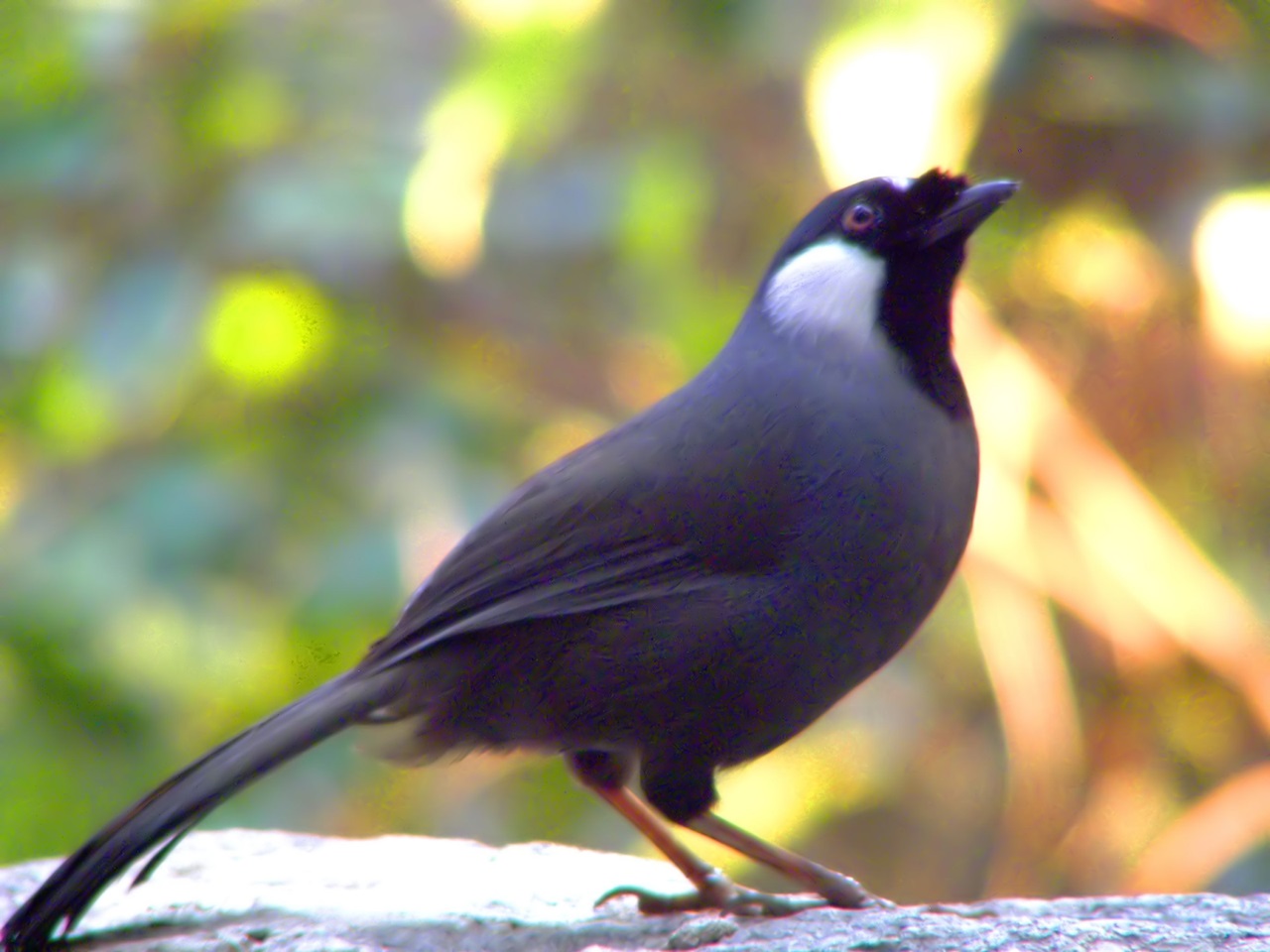
The unique appearance of a Silver-cheeked Babbler.
Below are the outstanding features of the appearance of the Silver-cheeked Babbler. Let's find out if they are any different from other birds in the Babbler family!
Body size :
- Length : About 23 - 26 cm (including tail)
- Weight : 60 - 90g
- Shape : Belongs to the group of medium-sized birds, slender, long, when standing with the head slightly raised, it looks very majestic.
- Beak : Slender, long, strong, usually dark gray.
- Tail : Long, slightly flared.
Characteristic coat color :
- Body fur : Mainly dark brown or black brown, some have ebony or gray shades.
- Cheeks : There are bright white patches of fur on both sides of the cheeks, extending from the corners of the mouth to behind the ears. This is also a sign to identify the Silver-cheeked Babbler.
- Chest and abdomen : Lighter in color than back and wings.
- Eyes : Round, large, usually dark brown in color with clear eye rims.
- Legs : Usually gray or light brown, sharp nails, with very good grip.
Habits of the Silver-cheeked Babbler
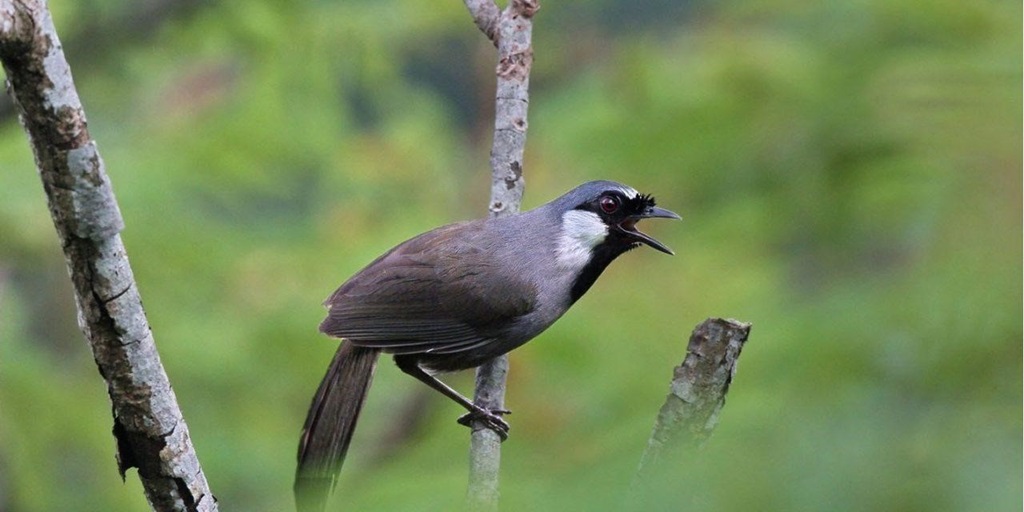
A Silver-cheeked Babbler is "singing".
The Silver-cheeked Babbler is not only known as a bird with a loud, strong voice, but it also has many interesting habits and behaviors. Let's find out the details below!
Voice fighting instinct
The silver-cheeked babbler has a loud, strong, continuous and rhythmic song. This bird also has a very strong “vocal fighting” instinct, it will “respond” to the songs of other birds to assert its own strength and territory.
It is this characteristic that makes the Silver-cheeked Babbler famous in the aviary industry and sought after by many people.
Like to live in a pack
In the wild, the silver-cheeked babbler lives in small groups of 3-10. They bond together and have a very high sense of community. If raised alone, they still have a flocking nature through calling to the flock or responding to the calls of other birds.
Active and loves to bathe
The silver-cheeked babbler is very active and dynamic, it can run, jump, and climb all day without getting tired. In particular, this bird species is extremely fond of sunbathing and bathing in water. This action not only helps the bird become cleaner but also makes it more energetic, sings more and better.
Very smart and sharp
The silver-cheeked babbler is an intelligent bird, capable of recognizing familiar people and remembering feeding times very well. When cared for from a young age, they can become tame and imitate some simple sounds. In particular, some individuals can even "imitate" the calls of other birds.
Reproductive behavior in nature
In the natural environment, the breeding season of the Blue-cheeked Babbler falls between March and August. They will nest in bushes or low tree branches made of dry grass and dry leaves.
The female will lay 2 - 5 eggs per clutch, incubating the eggs for about 13 - 15 days. After hatching, the chicks continue to be raised in the nest for about 1 month before leaving the nest.
Ecological behavior
The silver-cheeked babbler prefers to live in dense forests, secondary forests or low hills, where there is high humidity and lots of shady tree canopy.
They often hang around in the lower layers of the forest foraging, rarely flying high but mainly jumping and climbing.
Techniques for raising singing Silver-cheeked Laughingthrush
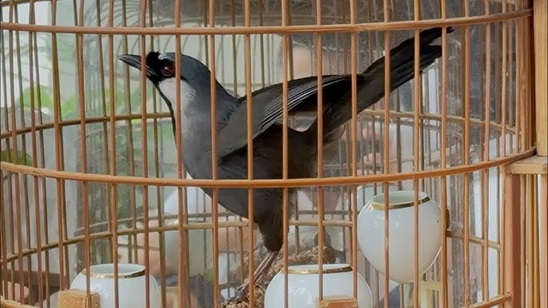
Image of Silver-cheeked Babbler being raised in a cage.
Are you new to raising Silver-cheeked Laughingthrushes but don't know where to start? For techniques on how to help birds sing well, be happy and healthy, please refer to the detailed instructions below, guaranteed to be simple and effective.
Choose the right cage and environment
First, the most important thing you need to know is to choose a suitable cage and living environment to help the Silver-cheeked Babbler adapt quickly, develop well and sing at its best. When preparing the cage, please note the following:
- Cage type : Round or square, minimum size 50 x 60 cm to give the bird the most space to fly and move comfortably.
- Cage bars : Moderately sparse to prevent birds from jumping and breaking the cage.
- Necessary equipment : Water trough and food trough, perch, litter tray.
- Cage material : You should choose a bamboo or wooden cage to both bring a familiar feeling and help regulate temperature better.
- Cage location : Place in a cool, airy, quiet place, away from drafts and strong sunlight. Avoid frequent changes in location as this can easily stress the bird.
What should I feed my Silver-cheeked Babbler?
The Silver-cheeked Babbler is an omnivorous bird, so it can eat a variety of foods. However, to make the bird sing most loudly and enthusiastically, you should feed it the following foods:
- Special bird feed for thrushes, rich in protein, low in cornstarch.
- Insects such as grasshoppers, crickets, and mealworms help birds to be vigorous and full of energy.
- Fresh ripe fruits such as bananas, papaya, apples, grapes, help supplement vitamins, smoother fur.
- Clean drinking water should be changed daily, preferably filtered water or boiled water that has cooled.
Bathing and sunbathing
A key "key" to help the Silver-cheeked Thrush sing at its best is to let the bird bathe in water and sunbathe regularly, specifically as follows:
Bathing :
- Bathe your babbler 3 - 4 times a week.
- After bathing, let the bird shake its feathers and dry them in the gentle sunlight.
Sunbathing :
- Let the bird sunbathe in the morning, from about 7 - 9 am.
- You should only sunbathe for about 15 - 30 minutes, not too long.
Taming and training birds to be tame
Another important step to help the Silver-cheeked Thrush develop well and have a good singing voice is to tame and train the bird to become more tame because when first bought, thrushes are often very shy, panicked and jump around randomly.
The simplest way to tame is as follows:
- You should hang the bird cage in a place with little traffic and cover the cage with a cloth for about 1 - 2 weeks.
- Once the bird gets used to it and is less panicked, you should move the cage to a more crowded place and practice interacting with the bird regularly.
- Interact with the babblers more and practice feeding them from your hand to help them become more tame with people.
How to train the Silver-cheeked Babbler to sing well
To help the Silver-cheeked Babbler sing with fullness and vigor, you can follow these steps:
Phase 1 - Taming the Bird
- The cage should be hung in a quiet place, and covered with a blanket ¾ of the cage so the bird can gradually get used to it.
- After a few days, gradually open the cage cover and let the bird listen to other Silver-cheeked Babbler singing using a recording or decoy bird.
- During this time, you should limit strangers from approaching.
Phase 2 - Stimulation
- Hang the Silver-cheeked Babbler cage near the decoy bird cage or play bird songs every day for 30 - 60 minutes.
- At this stage, the bird will begin to respond with its singing, gradually increasing in intensity as it sings.
- Use natural sound, don't turn it up too loud.
Phase 3 - Fire and stability
- Maintain a daily regimen of bathing - sunbathing - eating fresh bait.
- The bird should be hung in a place with lots of light, trees and natural bird sounds to help the bird get the best fire.
Pay attention to the molting stage
Normally, birds will molt once a year, usually during the rainy season until the end of summer. During this period, birds sing very little, so you need to reduce the amount of fresh bait, increase protein slightly and add vitamins B, C and E.
Note, at this stage you should not force the bird to "compete", just rest and recover your health.
Health care and disease prevention for Silver-cheeked Laughingthrush
Although the Silver-cheeked Babbler has good resistance, it can still get some common diseases if not properly cared for. Let's learn more to know how to prevent and handle them promptly.
Optimal disease prevention :
- Provide a reasonable, balanced diet, do not overuse fresh bait, add lots of fresh fruit, and change drinking water daily.
- Clean the cage, remove feces, wash water troughs and food troughs every day. The cleaner the cage, the less likely it is to have bacterial and parasitic infections.
- Limit frequent changes in habitat to avoid stressing the bird.
- Crushed garlic + warm water for birds to drink once a month to increase resistance.
- Supplement digestive enzymes and multivitamins about twice a week to help improve digestion.
Common diseases in Silver-cheeked Laughingthrush :
|
Disease name |
Reason |
Symptom |
Prevention and treatment |
|
Diarrhea |
Birds eat a lot of live prey. Unsanitary food |
Loose stools, foul smell, unusual color |
Reduce the amount of worms Check food quality Add digestive enzymes |
|
Fluffy |
Lack of sunlight Malnutrition Birds are stressed. |
Feathers standing up, ruffled The bird is lethargic and lazy. |
Increase sunbathing Provide a varied diet Add vitamins to your diet |
|
Oral thrush |
Candida |
White mouth of the bird Loss of appetite, inactivity, lethargy |
Clean bird cage Use mite sprays such as Hantox, Bio mat,... |
|
Respiratory tract infection |
Cold and wet weather The barn is in strong draft. |
Bird wheezing Singing bird Tired, inactive people |
Make sure the cage is dry, warm, and free of drafts. Use specialized respiratory drugs in birds |
How much is a Silver-cheeked Thrush?
Currently, in the Vietnamese bird market, Silver-cheeked Laughingthrush is traded in many different types, so the price is also very diverse. If you want to raise this bird, you can refer to the following price list!
|
Silver-cheeked Babbler |
Reference price (VND/piece) |
Characteristic |
|
Young Silver-cheeked Babbler |
1,000,000 - 2,000,000 |
Young bird, under 3 months old, not domesticated |
|
Male Silver-cheeked Babbler |
2,500,000 - 4,500,000 |
Purebred bird, sings well, easy to raise |
|
Female Silver-cheeked Babbler |
400,000 - 1,000,000 |
The bird rarely sings and is often kept as a decoy or for breeding. |
|
Silver-cheeked laughingthrush |
1,000,000 - 1,500,000 |
Wild birds, newly trapped, not domesticated, only suitable for experienced breeders |
Some reputable addresses to buy Silver-cheeked Laughingthrush :
- Good market: Many types of babblers, competitive prices.
- Facebook groups: such as "Vietnam Starling Association", are both places to buy and sell birds and share experiences in raising birds.
- Famous bird shops: Such as Quy Tran bird shops, En Bac bird shops,...
Note:
- If you want a bird to sing well and happily, choose a male bird.
- If you have no experience, you should buy tame birds instead of wild birds.
- Prices will vary depending on time, region...
- You should only buy birds from reputable sellers and stores to ensure origin, quality and after-sales service.
Questions and answers about Silver-cheeked Babbler?
How long do silver-cheeked babblers live?
If properly cared for, the Silver-cheeked Babbler can live from 7 to 10 years.
Are silver-cheeked babblers easy to keep?
It is quite easy to raise, you just need to be patient and spend a lot of time taking care of the bird.
How long does it take for the Silver-cheeked Laughingthrush to sing?
If domesticated properly, after only 2 - 4 weeks, wild birds can sing well.
Beautiful Silver-cheeked Babbler Image
The Silver-cheeked Babbler is a bird that not only has a beautiful, impressive singing voice but also an impressive appearance with its rustic yet powerful colors. Let's admire some beautiful Silver-cheeked Babbler images shared below to better visualize the appearance of this bird!

Two Blue-cheeked Thrushes are standing next to each other.
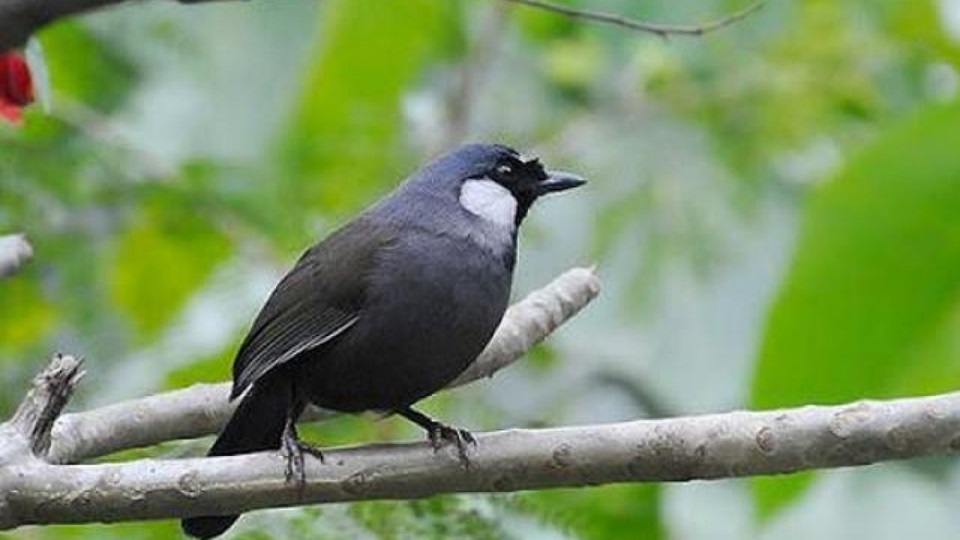
A Silver-cheeked Babbler is perched on a tree branch.

A Blue-cheeked Thrush foraging.
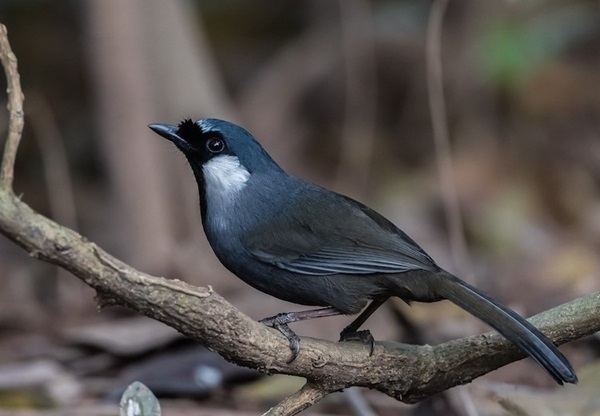
Silver-cheeked babbler with distinctive black plumage and white cheeks.
Through the article that nicebirds.net shared above, it can be seen that the Silver-cheeked Laughingthrush is not only a bird with a beautiful and unique singing voice, but also has an impressive appearance and many interesting habits. Suitable for both new breeders with no experience and long-time bird players.
If you are looking for a "singing friend", friendly and easy to raise, don't miss the Silver-cheeked Laughingthrush.
Don't forget to read other articles in the Blog section to expand your knowledge about this rich world of ornamental birds!

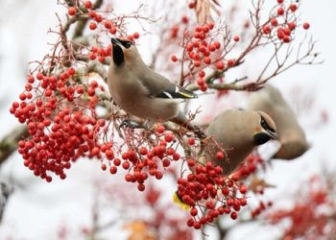

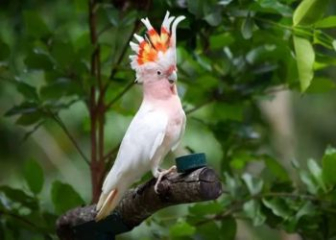
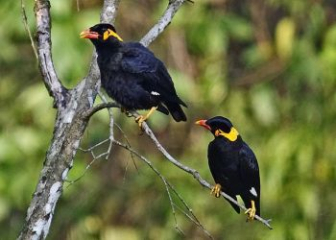
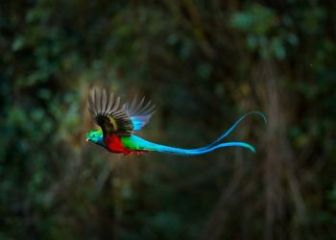





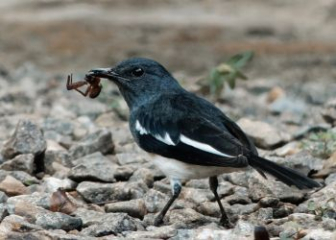
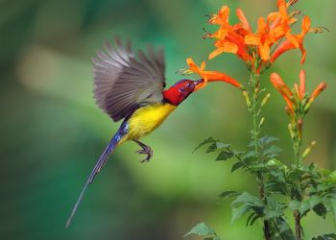


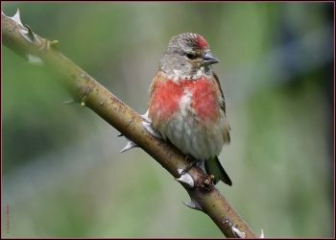
_350x250.jpg)
